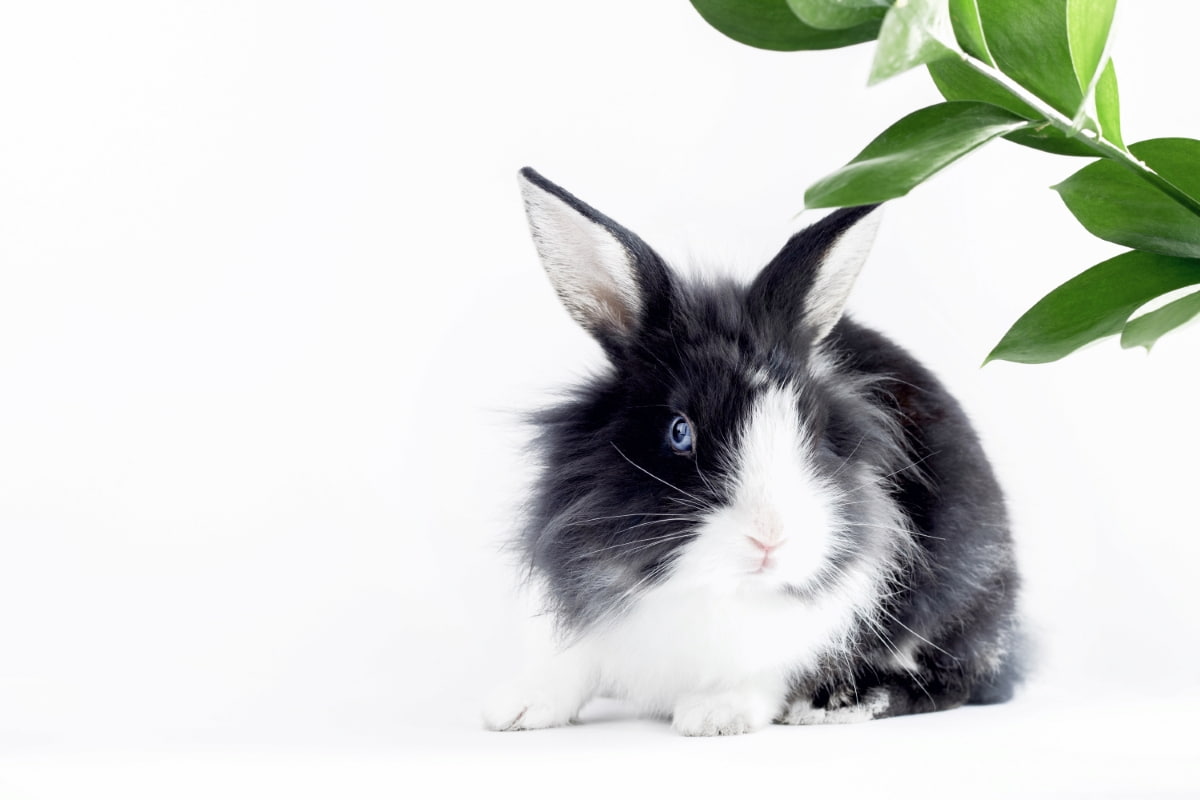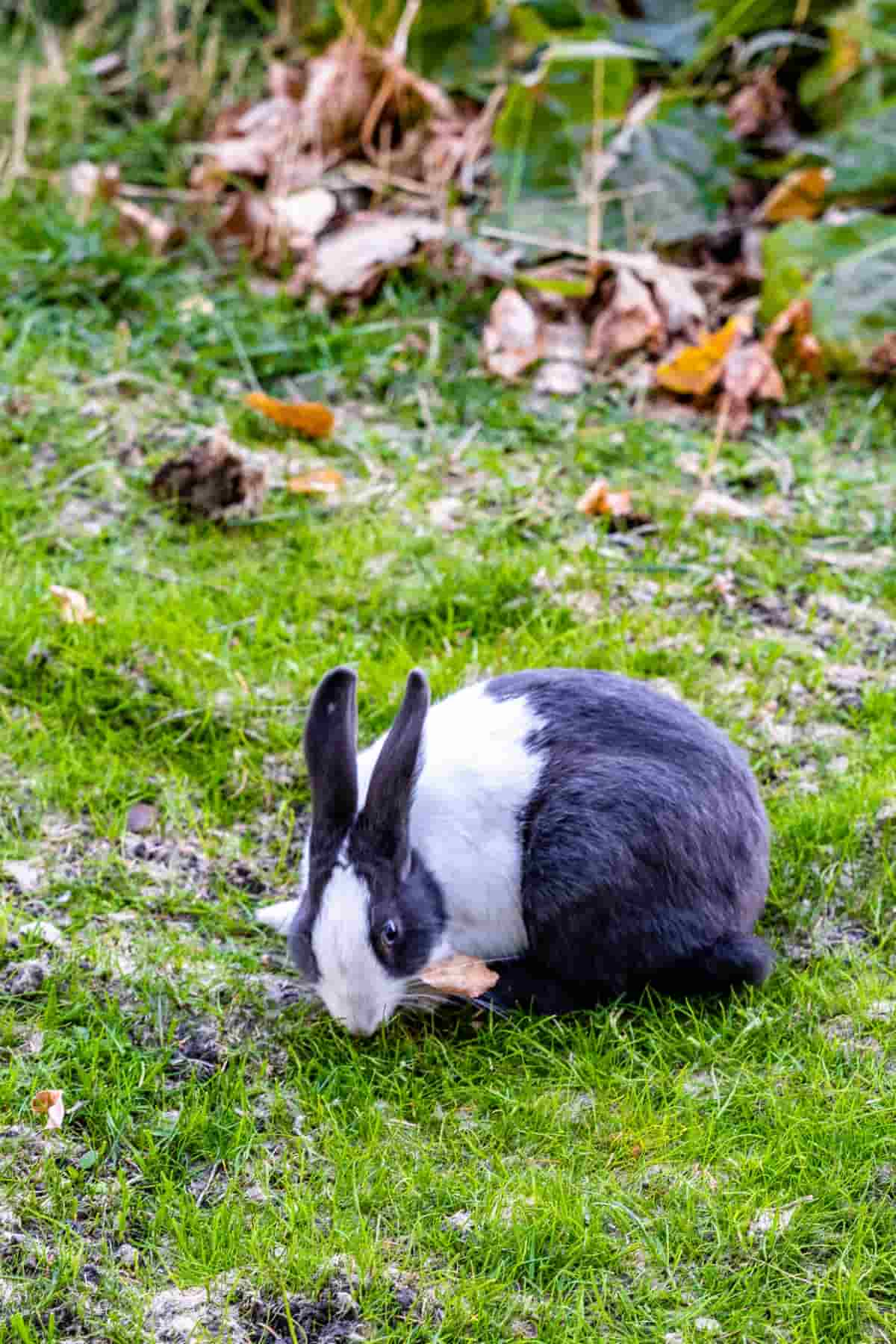These adorable, compact creatures are a delight to have as pets and make for fascinating companions. With their distinctive markings and friendly personalities, it’s no wonder that Dutch rabbits have become one of the most popular rabbit breeds worldwide.

Dutch Rabbit Breed Characteristics and Temperament
Dutch rabbits are known for their distinctive characteristics and charming temperament. They are easily recognizable by their striking markings – a solid-colored body with a white blaze on their face and a ring of white around each eye. This distinctive pattern gives them an elegant and polished appearance. Another benefit of raising Dutch Rabbits is their friendly and sociable nature. They are known for being gentle and easy to handle, making them great pets. These rabbits enjoy human interaction and can form strong bonds with their owners.
One of the most notable features of Dutch rabbits is their color pattern. They have a white blaze running down the front of their face, contrasting beautifully with the solid-colored fur on their backs. This unique marking gives them an unmistakable appearance that sets them apart from other breeds. In terms of temperament, Dutch rabbits are generally friendly and sociable creatures. They enjoy human interaction and can form strong bonds with their owners. They love being petted and will often seek attention from those around them.
Information About Dutch Rabbits
| Breed Name | Dutch |
| Breed Purpose | Mainly kept as show animals and pets |
| Breed Size | Small |
| Good as Pets | Yes |
| Climate Tolerance | All Climates |
| Color Varieties | Black, Blue, Chinchilla, Chocolate, Gray, Steel, and Tortoise. Yellow, Brown Grey, Steel Grey, Pale Grey, etc., color varieties are also available. |
| Lifespan | 5-8 years |
| Rarity | Common |
Dutch Rabbit Housing and Habitat Needs
Providing a suitable environment is essential for their well-being. These adorable creatures need ample space to move around and explore, so a spacious cage or hutch is necessary. Ideally, the enclosure should be at least four times the size of the rabbit, allowing them to stretch out comfortably. It’s important to note that Dutch rabbits are highly active animals, so regular exercise outside their enclosure is crucial.
In case you missed it: Top 9 Common Mistakes to Avoid in Rabbit Farming

Setting up an enclosed outdoor run or providing supervised playtime indoors can help meet their exercise needs. Additionally, ensure adequate ventilation in their living quarters to prevent respiratory issues. Keep the temperature regulated, as extreme heat or cold can harm their health. Don’t forget about cleanliness. Regularly clean out soiled bedding and provide fresh water daily. Your furry friend will appreciate having a clean-living space.
Dutch Rabbit Care and Grooming Tips
Dutch rabbits may have a compact size, but they require regular care and grooming to keep them healthy and happy. One important aspect of caring for these adorable creatures is maintaining their fur. A soft brush or comb can help remove loose hairs and keep their fur neat. Another essential aspect of Dutch rabbit care is nail trimming. Their nails can grow long if not properly maintained, leading to discomfort or injury.
Regularly checking and clipping their nails will ensure they stay at a safe length. Additionally, dental health is crucial for Dutch rabbits. Proper nutrition is also vital in the care of Dutch rabbits. They need a good diet consisting mainly of hay, fresh vegetables, pellets, and clean water provided daily. Socialization plays an important role in caring for these friendly creatures! Spending quality time with your Dutch rabbit through gentle handling and playtime helps strengthen your bond.
History and Origin of Dutch Rabbits
The history of Dutch rabbits is as fascinating as the breed itself. These adorable creatures have been bred as hybrids for countless generations, resulting in the unique characteristics they possess today. While once a popular breed for various purposes, they are now primarily found as beloved pets. Origins tracing back to Holland, the Dutch rabbit holds a significant place in rabbit history. Considered one of the oldest breeds, it has captured the hearts of many over the centuries.
Dutch Rabbit Colors and Patterns
Dutch rabbits are known for their adorable appearance, friendly temperament, and stunning colors and patterns. One of the most common color varieties is black, which showcases a rich and deep hue that adds elegance to the Dutch rabbit’s overall look. Another popular option is blue, a softer shade that exudes tranquillity. Chinchilla-colored Dutch rabbits boast a unique combination of gray and white fur, creating a striking contrast.
Gray Dutch rabbits are sleek and sophisticated, while steel-colored ones showcase cool metallic shades. Tortoise-patterned Dutch rabbits display an intriguing mix of dark and light patches on their fur, resembling the shell pattern in tortoises. Other color varieties of Dutch rabbits include yellow, brown grey, steel grey, and pale grey, each offering a unique charm.
Dutch Rabbit Lifespan and Health Issues
Dutch rabbits, like all living creatures, have a lifespan that we must consider as responsible pet owners. These furry little friends can live anywhere from 5 to 8 years on average. However, it’s important to note that individual factors such as genetics, diet, exercise, and overall care can influence their longevity.
To ensure your Dutch rabbit lives a healthy and happy life for as long as possible, it’s essential to prioritize their well-being. One of the most crucial aspects is providing them with a balanced and nutritious diet. A mixture of high-quality hay, fresh vegetables, and pellets formulated for rabbits should be offered daily.
In case you missed it: Frequently Asked Questions About Rabbit Farming

Regular veterinary check-ups are also necessary to monitor your Dutch rabbit’s health and catch any potential issues early on. This includes checking their teeth regularly since dental problems are common in rabbits due to their continuously growing teeth. Exercise is another vital element in maintaining good health for your Dutch rabbit. Providing ample space to hop around freely or engaging them in interactive play sessions will help keep their bodies active and prevent obesity.
Breeding Dutch Rabbits: Tips and Considerations
You should ensure that both the male and female rabbits are healthy and in prime reproductive condition. It is advisable to have them checked by a veterinarian beforehand to rule out any underlying health issues that may affect breeding. When selecting rabbits for breeding, it is crucial to choose individuals with desirable traits such as good temperament, proper conformation, and vibrant coat colors.
This will help maintain the breed standards and produce high-quality offspring. Close supervision is necessary when introducing the male rabbit, or buck, to the doe for mating purposes. A quiet space away from noise and disturbances will contribute to successful gestation. Breeding Dutch Rabbits requires careful planning, attention to detail, and providing optimal care throughout the process.
Dutch Rabbit Diet and Nutrition Requirements
Dutch rabbits have specific dietary and nutritional needs that must be met to thrive. Hay should make up the majority of a Dutch rabbit’s diet. It provides necessary fiber, aids digestion, and helps wear down their constantly growing teeth. Fresh vegetables, such as leafy greens like kale, spinach, carrots, or bell peppers, should also be included daily.
It’s crucial to avoid feeding your Dutch rabbit foods that are toxic to them, including chocolate, avocado, onions, tomato leaves, or stems. In addition to a nutritious diet, it’s recommended to provide your Dutch rabbit with opportunities for exercise and mental stimulation. This can include providing toys or safe objects for chewing and creating an enriching environment within their enclosure.
Training and Socializing Dutch Rabbits
It is an important aspect of their care that can greatly contribute to their overall well-being. These intelligent little creatures are quick learners, making them relatively easy to train. However, patience and consistency are key when teaching them new behaviors. When training your Dutch rabbit, positive reinforcement techniques work best.
In case you missed it: Top 10 Rabbit Diseases: Symptoms, Causes, Prevention, and Control

Use rewards such as treats or praise to motivate and encourage desired behaviors. Socialization is equally important for Dutch rabbits. They thrive on companionship and interaction with humans as well as other animals. Spending quality time bonding with your rabbit daily is crucial, providing plenty of opportunities for playtime and gentle handling.
Conclusion
Dutch Rabbits are also highly trainable. You can teach your rabbit various tricks and commands with patience and positive reinforcement techniques. This creates a fun bonding experience, stimulates their intelligence, and keeps them mentally active. A proper diet plays an important role in keeping your Dutch rabbit healthy. Their diet must consist mainly of fresh hay and high-quality pellets specifically formulated for rabbits.
- Feed Your Flock for Less: Top 10 Tips to Save on Chicken Feed
- Ultimate Guide to Ossabaw Island Hog: Breeding, Raising, Diet, and Care
- Hatching Answers: The Top 10 Reasons Your Chickens Aren’t Laying Eggs
- Eggs and Economics: Breaking Down the Cost of Raising Backyard Chickens
- Defend Your Greens: Proven Methods to Keep Iguanas Out of Your Garden
- Ultimate Guide to Cinnamon Queen Chicken: A Comprehensive Guide for Beginners
- Ultimate Guide to California Tan Chicken: Breeding, Raising, Diet, Egg-Production and Care
- Ultimate Guide to Marsh Daisy Chicken: Breeding, Raising, Diet, and Care
- 10 Types of Chicken Farming Businesses You Can Start for Profits